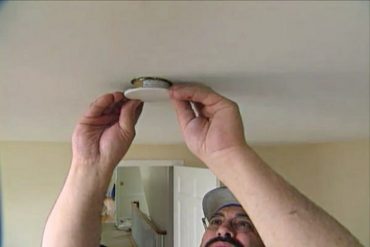
John Bleasby
Sprinkler industry clarifies National Building Code objectives
Canadian ContractorCASA seeks "more collaboration between builders and municipalities"
Worried about lobbying efforts to make home sprinkler systems mandatory? In response to our previous coverage concerning industry efforts targeting the National Building Code, the Canadian Automatic Sprinkler Association (CASA) asked for the opportunity to better clarify their position. Canadian Contractor’s John Bleasby spoke to Matthew Osborn, National Communications Manager of CASA.
Let’s start with some reader feedback. We’ve had comments that the pricing suggested by your association is lower than what homeowners might actually find in the marketplace. Do you stand behind the 1.0 to 1.5 per cent increased cost estimate for installing a sprinkler system in a new home?
Yes, we absolutely do. That number, that percentage, is based on reports by third party independent organizations like the NFPA (National Fire Prevention Association). They have two reports that looked at communities mainly in the U.S. but included one community in British Columbia. The average cost is in the $1.50 per square foot range.

Matthew Osburn, National Communications Manager for CASA
One reader told us they had to bring in a new 2-inch service from the street. That adds to costs significantly.
I think the challenge for our industry is that there are so many variables and so many different experiences. I will say a lot of the pricing in those reports are based on markets that have some mandatory residential sprinkler requirement in place and therefore a large volume on an annual basis over an extended period of time. In those communities requiring sprinklers for the past decade or longer, their marketplace is established, experienced, they’ve found efficiencies, and you get really competitive pricing. However, when you use that narrative and go to a custom builder with a one-time installation, the price can dramatically increase.
What about maintenance and service?
It would be up to the owner to ensure that maintenance of the system takes place on an annual basis. It’s no different than, say, smoke alarms. The actual maintenance procedures are quite generic — owners can easily do it themselves. It basically boils down to this; as long as there are no visible leaks, no damage to the sprinkler heads or sprinkler piping, you’re pretty much good to go. There is the one caveat. Depending on the water supply coming into the home, some jurisdictions require backflow provisions, and may require that maintenance of the backflow device to be done by a licensed technician.
What would be those annual service costs for a homeowner?
I haven’t seen any accurate numbers recently, but I’d estimate a one-time visit per year would be in the $200 to $250 range.
 One reader suggested that fatalities from homes fires across Canada actually decreased dramatically from 2010 to 2014, despite the addition of about 800,000 new homes during that time period. Wouldn’t that indicate less need for sprinklers now than in the past?
One reader suggested that fatalities from homes fires across Canada actually decreased dramatically from 2010 to 2014, despite the addition of about 800,000 new homes during that time period. Wouldn’t that indicate less need for sprinklers now than in the past?
I will say this; the implementation of smoke alarms, CO devices, along with fire sprinklers in a home is going to offer the best protection. If you look at the actual characteristics of fires today, fires are growing much quicker, much hotter, and release much more toxic gasses than ever before. You need a quick detection system to notify and then ideally a suppression system, such as sprinklers, to start controlling that fire to give the building occupants the most time to get out.
Are there paybacks for homeowners, like insurance discounts?
We’re aware of a number of insurance companies that offer discounts for residential sprinklers, some as much as 20 per cent.
Do those living in rural areas dependant on wells need to be concerned about the adequacy of their systems in order to operate a sprinkler system?
If you’re talking about new construction, in a lot of cases the residential water supply system is adequate. There may be instances where a larger pump is needed to maintain both the domestic and sprinkler system demands, but everything I’ve seen does not indicate a dramatic size in the pump size itself.
How realistic is your organization’s goal to have the mandatory inclusion of home sprinkler systems added to the National Building Code starting in 2020?
We’ve been submitting proposals since the early 2000’s, but today, mandatory inclusion is no longer our main objective. In fact, we’ve been looking at more collaborative, voluntary approaches. This would mean perhaps leaving it up to stake holders — the municipality, the developer, the builder — to find more incentives, rewards and benefits of installing sprinklers through the development and building process, rather than taking a mandatory approach. Then, once a municipality and the builder agree to install sprinklers, the building code would outline the technical standards for the correct system design, which in fact are already in place.
What form might those incentives take?
We’ve seen examples where communities have used sprinklers as an option to address development challenges. I’ve seen communities where there was a challenge in obtaining proper access to the development due to the geographical layout. In discussions with the developer, the local municipality and the fire department, they came to the conclusion that if the development was fully sprinkler’ed, it would meet the concerns of the fire department and allow the development to go forward. There might be other added benefits, like possibly increasing the density between units or adding more lots because only one access point is now needed instead of two. This is what we mean by a more collaborative approach than a mandatory code change. It adds more flexibility to the process.
Got feedback? Make your opinion count by using the comment section below,
or by sending an email to:
JBleasby@canadiancontractor.ca
Follow John on Instagram and on Twitter for notifications about his latest posts

![]()
Advertisement
Print this page

Has anyone estimated the cost the national cost to make home sprinklers mandatory, including capital cost, maintenance, and flooding due to system failures ? Would this be the best allocation of resources ? Could more lives be saved by investing in infrastructure to reduce traffic accidents ? health care ?
I know many people who suffered from auto accidents or lack of health care. I do not know anyone who was injured or died in a house fire. We need to prioritize funding initiatives based on statistics, not emotions, please.